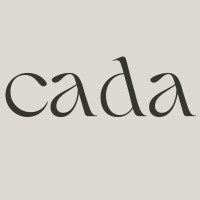Invisalign or braces?
That’s the most common question that most people ask when it comes to perfecting their smiles. Although braces for teeth alignment has been the gold standard since the 1950s, technology has gotten more advanced as the years have gone by.
In 1999, Invisalign put clear-aligner treatment on the map as an alternative to braces to correct crooked teeth.
Are you wondering whether you should get Invisalign or braces? If yes, then you should check out this guide on how to decide.
How Does Invisalign Work?
Invisalign uses invisible trays that you wear for a set period of time, which gradually move your teeth in the correct position. The Invisalign process starts with a dental professional examining your teeth using X-rays and dental impressions of your teeth to see if you are a good candidate for clear aligner treatment.
Invisalign is only for teens and adults. Kids who have adult teeth that are still growing or kids who still have their baby teeth don’t qualify for treatment.
Once you qualify for treatment, Invisalign creates a 3D model of your teeth and creates a set of invisible trays that wear and change out every two weeks.
Each tray will move your teeth to the correct position about 1/10mm at a time. Depending on your teeth correction needs, treatment can be done as early as six months while advanced treatment can take 24 months.
Benefits of Invisalign
There are many benefits of Invisalign. These benefits include:
- Better oral hygiene
Aligners are removable which makes it easier to brush teeth and resume healthy dental hygiene practices
- No food restrictions
With the aligners being easily removed, you can enjoy all the food you would typically eat.
- Sports approved
All you have to do is pop off your aligners during your sporting event.
- No wires
Wires in traditional braces can have metal wires poking out, which adds tremendous discomfort. With Invisalign, there are no wires to worry about.
- Discretion
Insivalign is seemingly invisible. No one will know you are undergoing aligner treatment other than you.
- Comfort
With clear aligners using light pressure, Invisalign tends to be more comfortable than braces.
How do Braces Work?
Dental braces are devices that use brackets, wires, bonding material, and ligature elastics to correct crowded, crooked, or misaligned teeth.
Once the braces are in place, your dental professional will make adjustments to the archwires, which will lightly put pressure on your teeth to move them in the correct position.
Braces, don’t provide much discretion and will restrict eating certain types of foods, such as gum or anything with a grippy and chewy texture.
Treatment can last anywhere from 7 months to 3 years.
Benefits of Braces
Although braces often aren’t as comfortable as Invisalign, they do still have their fair share of benefits.
- Treatment for all
Braces can be a suitable treatment for even the most difficult cases.
- Treatment time
More pressure can be applied to braces compared to clear aligners. Although not as comfortable, depending on the skill of your orthodontist, braces can speed up your process to the results you’re looking for.
- Consistent results
Braces are more fine-tunable than clear aligners because there is more force to move teeth in the position you’d want them to be.
So Which Is Better? Invisalign or Braces?
The only way to answer this question is to outweigh the pros and cons and determine which treatment option is best for you.
Call up your dentist and ask about these treatments to get more details so you can determine whether Invisalign or braces are best for you.
Want more health tips?
Make sure you check out the rest of our blog!




